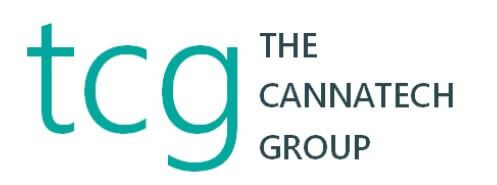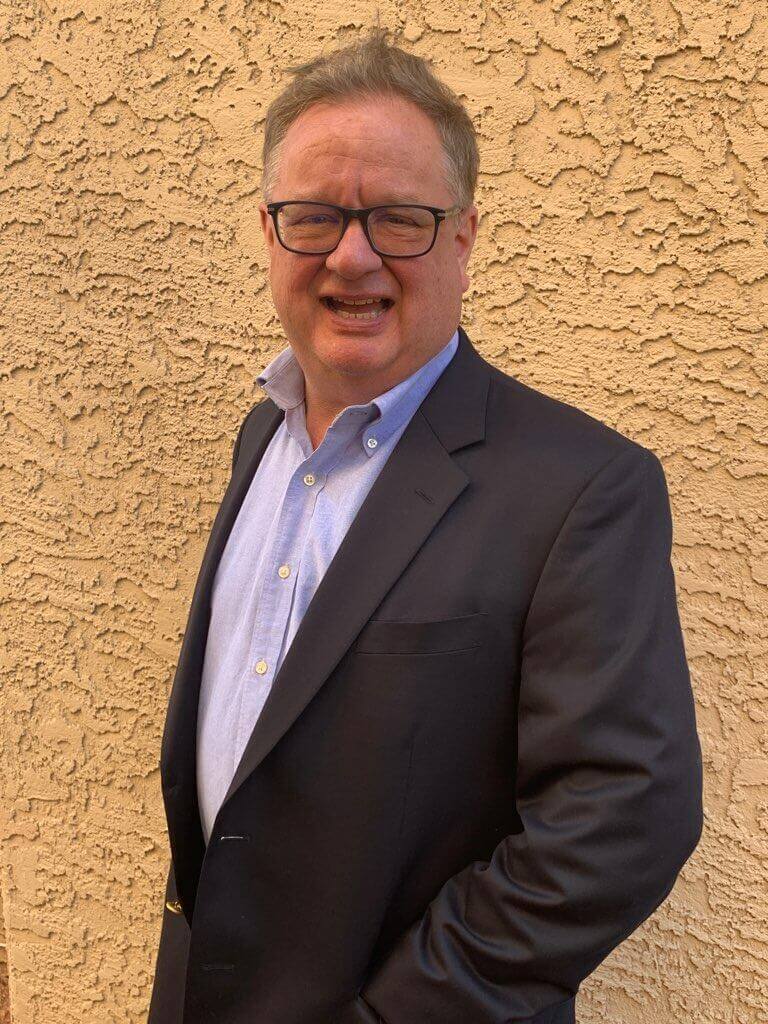With the promise of increased productivity, reduced operating cost, and growing your business many business owners are looking at leveraging their data using artificial intelligence (AI) and predictive analytics. With its ability to assist with smart-ordering, marketing automation, inventory management, ability to better serve customers, and reduced employee churn, AI has proven that it can help drive profitability for your business. Harry Brelsford of the CannaTech Group sits down with Cathy McCorquodale of MaryJane Menu (a woman-owned tech company developed specifically to help cannabis businesses streamline operations and improve sales) to discuss the importance of your data, and how you can use it to take your business to the next level.
Video Transcription
Harry Brelsford
All right, well, I’m just winging it. I don’t know much about you or what you do. So, first of all, introduce yourself. And then tell us about Mary Jane menu, what you do. And I’ll ask you a couple questions along the way.
Cathy McCorquodale
Oh, perfect. Well, Harry, I’ve been in software development for my entire career. So 25 plus years, been doing software development, workflow automation, specifically, I ended up getting into the cannabis space quite a few years ago, when I was doing a management consulting gig, essentially trying to really streamline automation for a delivery company in California. So ended up going through trying to help them pick the right technology to use in the right place, ended up really scouring technology in the in the cannabis space. Because it really was very, very different than the kind of solutions that were open on, you know, on the market that I’d usually recommend for clients. So ended up doing a lot of work in looking at applications trying to find applications to automate cannabis businesses ended up really just custom coding a lot of the solutions. Yes, because I just couldn’t, I couldn’t find I couldn’t find the right solution, I couldn’t find solutions that allowed my clients to own their own data. And so ended up testing, you know, doing some custom code that referred to another. You know, a friend of a friend, as it works in the cannabis space got referred to another group did really almost the same thing got referred again, did almost the same thing. And finally went, you know, what, I think we got something here in in one of the sort of solutions that we kept having to custom code for the space. And that, that was a, really where Mary Jane menu came about, it was a branding of a working solution, that we had coded a number of times to help wholesale distribution. So specifically, what we were finding is a lot of sites, a lot of folks had a business to consumer websites, but they were really lacking on the on the automation side on the wholesale side. And, you know, they didn’t need much, but they were just sending spreadsheets out, for the most part, big brands, small brands, extractors processors, kind of across the gamut. Every time I kept talking to folks, they were like, Yeah, well, we’ve got it all automated, we put it in a spreadsheet, and we send a spreadsheet out to 60 dispensaries to buy our product, and I’m like, Oh, my God. That is, that is really, you know, like, explain to me how the, how that process works for you. And, and, you know, that’s like, Yeah, well, we have to have a couple salespeople, they take the calls, we never really have the inventory we need. So we have to, you know, nothing on that spreadsheets really current because we send it out a week ago, and then we have to do a lot of back and forth, and we have to hit our supply chain up for more products. And like, you know, there are things that can be automated, and this is one of them. So Mary Jane manual was really born out of that. And when I created the the ordering platform, I mean, essentially just automating a spreadsheet day one was, you know, let’s just put our inventory in and allow some bulk ordering. And then, you know, as as folks started to use it, they’re like, Gee, Kathy, you know, this is actually pretty darn good. And I’m like, Well, yeah, I’ve coated it in most recent technology,
you know, kind of ended up saying, Okay, why don’t we brand this and I partnered with, with a group called standard insights, do some of my development. And they’ve been around for four plus years. They they do AI as a service. Good team. Yeah. Yeah. So I ended up reaching out to them, I heard one of their founders on a podcast, and I was doing a very heavy data analytics exercise for a for a customer. And we were going through trying to find patterns in their data. And I was writing queries, and it was slow, and it was hard. And I’m like, you know, there’s got to be a better way to process data. And, and so that’s where I crossed paths with standard insights. I asked them to help me process a data set for the cannabis space. And I thought that I would end up you know, having to do a lot of data mapping, like, you know, this is what a strain is, this is what a product is, this is what a terpene it thought I’d have to do a lot of, you know, product mapping in order to get the data to work. And literally I gave them a dataset ran it and they were able to find patterns in the data for sales data without even doing extensive product. To mapping and so I ended up kind of stepping back and saying what happens if I can add AI to marriage a menu, what happens if you can take an ordering platform that’s really very simple and easy to use intentionally, intentionally, it’s meant to be a super easy, super, you know, just log in bulk order. And we’re done. Handles, you know, communications back and forth and orders, texting and whatnot, but ended up like looking at that and saying, you know, what, that, that makes the platform significantly better. And it gives me a competitive edge as a product. So that’s where I ended up saying, okay, look, let’s, let’s integrate AI, into an ordering platform and go from there. And that’s really where sort of we turn the corner. Because it does make it it does make a significant difference. And it makes a difference in speed, it makes a difference in quality of, of data. And so I’ve always, you know, sort of been a data perfectionist and made sure that the data that we were storing and managing and he was very clean. But soon as we added AI, we could now track orders and start to find patterns. And so instead of a query, AI will find a pattern, and then it can start making recommendations like what should you be ordering? What would a, you know, what, what is this customer likely to order, like the, you know, recommendations. And so I folded AI into the platform. And and now it’s it’s kind of, it’s fast, it’s easy, and it’s smart. And so it’s been a game changer for, for the, for the application, really, um,
Harry Brelsford
what I haven’t heard you mention, and maybe it’s a term more my past life of traditional technology on the infrastructure side. But the big buzzword over on that side of the aisle is digital transformation. And I’m hearing that’s essentially kind of what you’re doing. Are you messaging that as part of your client interactions and business development? Is that is that a term in our industry? Or is it not the same?
Cathy McCorquodale
Hey, it’s interesting, because I’ve, you know, sort of being in software, you’re always doing change management, right? You’re always doing by by definition of implementing a new tool into a person’s work space into their workday, you’re, you’re changing the way they work. So the concept of digital transformation, it’s, it’s always sort of been present in software work. But that’s typically in cannabis, what I’m seeing more so is I’ve seen this sort of divergence, really, of existing technologies that were designed for the cannabis space. And, and now sort of, you know, new players trying to get into the space, I’m getting a lot of, you know, sort of taps on the shoulder and, you know, what is it that we need to understand about cannabis technology? Specifically? Is there a change management component nuts, literally digital transformation? And that’s, that’s kind of where I say, okay, look, there’s, there’s a difference in this market, between small and midsize folks, which really, we rely on for quality cannabis in this space. And then there’s, you know, there’s, there’s sort of the big players and the big players, like in any industry, how do they have the they have money to expand in technology, so they’re going to be able to hire, you know, full time, IT departments, they’re going to be able to hire, you know, basically, knees times 10, you know, at at 250, and, you know, a year to run their organization. So, so they’re gonna, the more the bigger organizations will have a digital transformation sort of strategy, but they’re not that old in this space. Yeah, that’s kind of what that’s the thing. It’s like,
Harry Brelsford
some of them don’t have to transform.
Cathy McCorquodale
Yeah, there’s lots of transit. So like my, my concept, most of my, you know, I target small and midsize businesses. So they’re not really transforming, per se, but they are going digital so I’m, I’m taking them from being you know, cultivators into Okay, now you’ve got to, you know, you can’t just sell your products. Unfortunately, at farmer’s markets, you can’t just, you know, now you have to actually have a better distribution strategy. How do you use technology, so it’s not really a transformation, it’s more of a awakening. Is that Is that right? You know, it’s more of like, okay, I’ve been in this space. I’m ready to grow my business. I’m ready to incorporate technology as a strategy. And that’s that’s sort of where I’ve been kind of coming in and helping a lot of a lot of the small and midsize businesses. It’s, it’s what technology should I use, I’m not typically replacing technology or transforming it. They might have subscribed to an application here or there, but they’re not, you know, they really don’t have strong solid infrastructure technology that’s, you know, five to 10 years old that I have to replace.
Harry Brelsford
Yeah. A final question. Before I let you run, where are you located?
Cathy McCorquodale
Well, we do most of our business I in California, and Colorado, New Mexico, I’m out of Tampa, which we have a lot of vertically, it’s a vertically integrated state. So there’s not a lot of help, you know, smaller midsize cannabis companies competing in the space, unfortunately yet, but we, you know, we do business, you know, across the states, just really focusing on that small and midsize businesses, and then I have the luxury of getting to spend half my years and up in Canada. So I get to see the sort of the federally legal market. So you know, I, I sort of bounced between both coasts, but you know, I do get to have insight into the Canadian market and seeing how, you know, granted it is a population of 35 million versus a population of 350 million in the States. So, so a little bit smaller scale, but yet, almost, you know, it is more advanced because they are federally legal. So they do have a bit more sort of access to technologies that, you know, we don’t have access to in the States because we do have legalization. So after all this time, so that’s where,
Harry Brelsford
hey, thanks for joining us. I’ll see you at some of the shows, and we’ll stay in touch I did.
Cathy McCorquodale
Anything I can do for your community. I’m happy to happy to help and I appreciate the time and excited to to kind of bring the next generation of cannabis technology to the forefront. So, appreciate it. Thanks, Harry. Have a great day.








